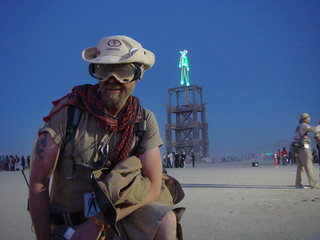
I haven’t had time to add to A Burner Lexicon recently, but I just wrote about about Burning Man again on Firedoglake. I touched on the tragic suicide of Paul Addis, and the lessons his actions and the community’s response can teach us about how other groups should respond:
Its central ritual is the end of week burning of a massive effigy of a human figure. Addis short-circuited this ritual in 2007 by setting fire to the icon on the event’s first night. Reports differ on the circumstances of this action, with Addis claiming warnings were given and attempts made to clear the area while other eyewitnesses tell stories of helping endangered, inebriated people away from the flames. Addis was arrested, convicted of felony arson, and spent two years in jail.
Burning Man offers a place where some people (those who can afford it) come to explore the nature of identity, creativity and social interaction free from the constraints of mainstream capitalist culture. Yet as the event grew, this experiment in temporary community naturally adopted rules. Steven T. Jones, the San Francisco Bay Guardian reporter who has chronicled many Burning Man events, cites an accidental death in 1996 as the beginning of the end of the event’s true lawlessness.